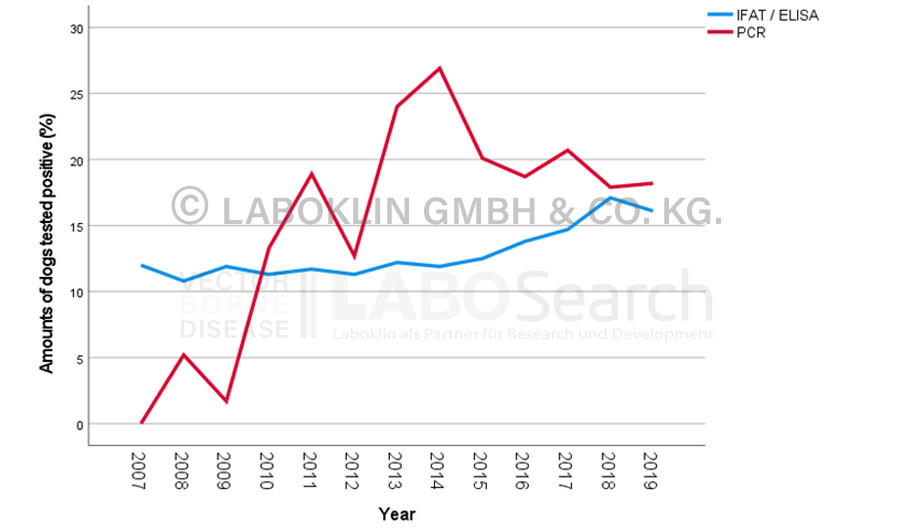- Leishmaniasis
- Species: for example, in dogs and cats
- Zoonotic potential (especially for immunosuppressed humans and children)
- Pathogen transmission
- Mainly by sand flies
- Diaplacentar from bitch to their puppies
- From the male to the female by mating
- Biting
- Blood transfusions
- Direct detection methods
- PCR (positive result indicative for acute infection)
- Cytology out of bone marrow, skin lesions, lymph nodes (less sensitive compared to PCR testing)
- Indirect detection methods
- Antibody-ELISA (enzyme-linked immunosorbent assay)
- IFAT (immunofluorescence antibody test)
- Chronic and progressive disease
- Multiple complexes of clinical signs
- General (for example lymphadenomegaly, lethargy, inappetence)
- Skin disease (dermatitis)
- Ophthalmological signs (for example uveitis, blepharitis, keratoconjunctivitis)
- Others (for example epistaxis, lameness)
- No possibility to cure leishmaniasis
Dog (2007 – 2022, n = 132,759)
Timeframe | PCR | IFAT/ELISA |
2020-2022 | 14.6% | 23.7% |
2017-2019 | 18.8% | 16.0% |
2014-2016 | 21.0% | 12.8 |
2011-2013 | 20.0% | 11.7 |
2007-2010 | 5.1% | 11.5% |
Cat (2012 – 2022, n = 677)
Timeframe | PCR | IFAT/ELISA |
2020-2022 | 7.5% | 3.2% |
2012-2020 | - | 4% |
Annual distribution of dogs tested for Leishmania spp. by PCR and by antibody IFAT/ELISA (2007-2019)

Up to date, leishmaniasis is thought to be not an endemic disease in Germany. Infections are linked to stays abroad.



